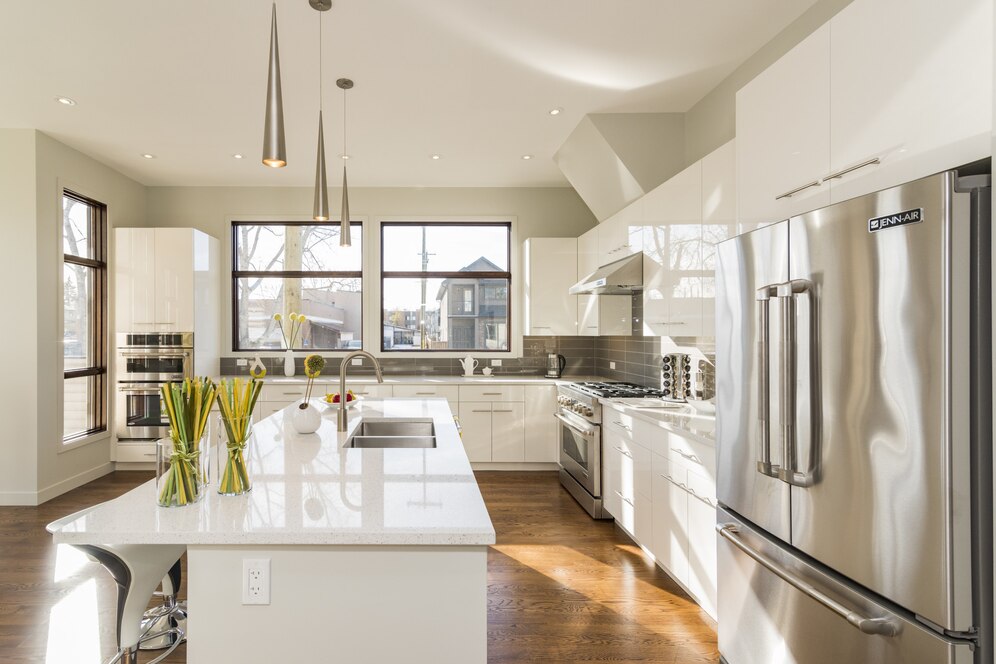A dripping faucet might seem like a minor annoyance, but it can have a noticeable impact on your water bill. Even a slow drip can waste gallons of water over time, leading to an increase in your monthly expenses. This seemingly small issue can add up, both environmentally and financially, if left unchecked.
Water conservation is important, and a dripping faucet represents unnecessary waste. Choosing to address it promptly not only saves water but also ensures that you aren’t paying for water you don’t use. Fixing the problem can be straightforward and inexpensive.
Plumbing issues, no matter the scale, often have hidden consequences. Ignoring a dripping faucet might result in higher utility costs and potential long-term damage. Ensuring your home’s plumbing is in good condition can help prevent these issues.
Understanding Water Bills and Faucet Dripping
A dripping faucet can lead to a noticeable increase in the water bill due to the constant small flow of water. Both human error and mechanical issues play a role in how much this can affect costs.
Factors Influencing Water Bills
Several factors can influence water bills. One crucial factor is the rate of water consumption. Leaky faucets, toilets, and pipes can significantly contribute to higher bills.
Another factor is the water rates set by local utilities, which can vary depending on the region. Certain areas may charge more per gallon of water. Furthermore, excessive usage during peak times can lead to steep charges.
Monitoring usage and addressing repairs promptly, like hiring a plumber for a leaking faucet, can prevent unnecessary costs. Installing water-saving devices also helps reduce the bill.
Mechanics of a Dripping Faucet
A dripping faucet usually occurs due to worn-out or faulty components such as washers, O-rings, or seals. Over time, these parts degrade from regular use, leading to leaks.
A slow drip may seem insignificant, but it can waste gallons of water. According to the EPA, a faucet that drips once per second can waste over 3,000 gallons of water annually.
Repairing or replacing faulty parts can stop the drip. In many cases, it is advisable to hire a plumber to correctly diagnose and fix the issue to avoid persistent problems. Taking swift action can save water and reduce the water bill.
Calculating the Cost of a Dripping Faucet
A dripping faucet may seem trivial, but the cumulative effect on water bills can be significant. The subsections below explore the volume of water wasted and the variations in water pricing.
Volume of Water Wasted
A typical dripping faucet can waste between 3 to 5 gallons of water per day. This figure escalates depending on the drip rate and time it goes unnoticed. Using a standard drip calculator, one can estimate that a faucet dripping once every second could waste around 86,000 liters annually.
Short bursts of leakage can add up quickly, leading to massive water loss over time. For instance, a faucet dripping at a rate of 1 drop per second leads to approximately 11 liters per day. This can contribute significantly to annual water wastage and subsequently impact the water bill.
Water Pricing Variances
The cost of water varies significantly based on geographic location, local water utilities, and usage tiers. In some regions, the price per gallon may be relatively low, while in others, it may be substantially higher. Understanding local water rates is crucial to calculate the potential increase in the water bill.
For example, in cities where water is more expensive, such as San Francisco or New York, the cost implications of a dripping faucet can be considerable. Homeowners should check their water bill for the specific rate per gallon to get an accurate estimate of additional costs incurred due to dripping faucets. This information helps in determining the financial impact accurately.
Fixing a Dripping Faucet
Fixing a dripping faucet can save money on water bills. This section covers do-it-yourself fixes and when you might need to hire a plumber for professional repair services.
DIY Fixes
A dripping faucet might be fixed with basic tools and a little patience. Start by turning off the water supply to the faucet. This is usually done by turning a valve located under the sink.
Once the water is off, remove the faucet handle. This often requires a screwdriver to take off the decorative cap, then a wrench to loosen and remove the handle. Inspect the internal components like washers, O-rings, or cartridges, which are common culprits for drips.
Replace worn or damaged parts with new ones from a hardware store. Make sure to match the exact type for compatibility. Reassemble the faucet by reversing the disassembly steps.
Turn the water supply back on and check for any leaks. If the faucet still drips, it might have a more serious issue requiring professional attention.
Professional Repair Services
If DIY fixes do not resolve the issue, it might be time to hire a plumber. Professional plumbers can quickly diagnose and fix complex problems that may be beyond typical DIY skills. They bring specialized tools and expertise to ensure a lasting repair.
Hiring a plumber can prevent further damage to the faucet and surrounding plumbing. Contacting a plumber is advised for those who are not comfortable with taking apart and reassembling a faucet.
Scheduling a plumber should be straightforward; many offer same-day or next-day services. Be ready to describe the problem and any steps already taken. This helps the plumber prepare for efficient service when they arrive.
Preventative Measures and Long-Term Savings
Taking proactive steps can significantly reduce water waste and lead to substantial savings on your utility bills.
Routine Maintenance
Consistent inspection of household plumbing can prevent leaks from worsening. Homeowners should regularly check faucets, pipes, and water heaters. A small drip may seem insignificant, but it can waste up to 3,000 gallons annually.
Addressing leaks promptly requires keen observation and timely repairs. In cases of complex issues, it is wise to hire a plumber. Professional examinations ensure that minor drips do not escalate into costly problems.
Simple tools such as plumber’s tape, wrench, and replacement washers can assist in routine maintenance. Keeping a maintenance schedule helps identify problems early, and can prevent significant water loss over time.
Investing in Water-Efficient Fixtures
Modern water-efficient fixtures drastically reduce water usage. Installing low-flow faucets, showerheads, and dual-flush toilets can lower water consumption by up to 60%.
These fixtures are not only environmentally friendly but also contribute to long-term financial savings. Replacing traditional fixtures with WaterSense labeled products makes a substantial difference in water bills.
Investing in high-quality fixtures means fewer replacements and repairs, ensuring durability and efficiency. Energy-efficient dishwashers and washing machines also use less water and electricity, adding to overall savings.





